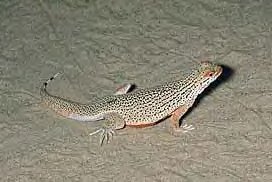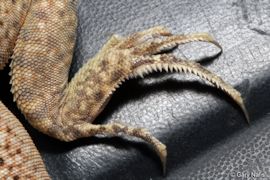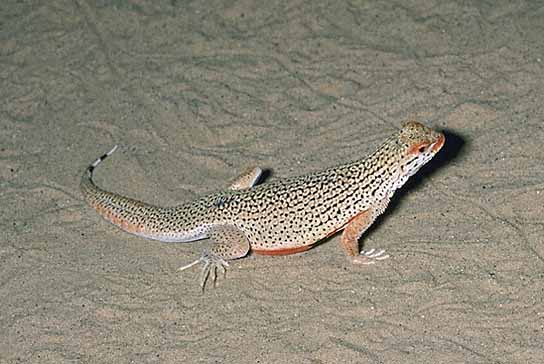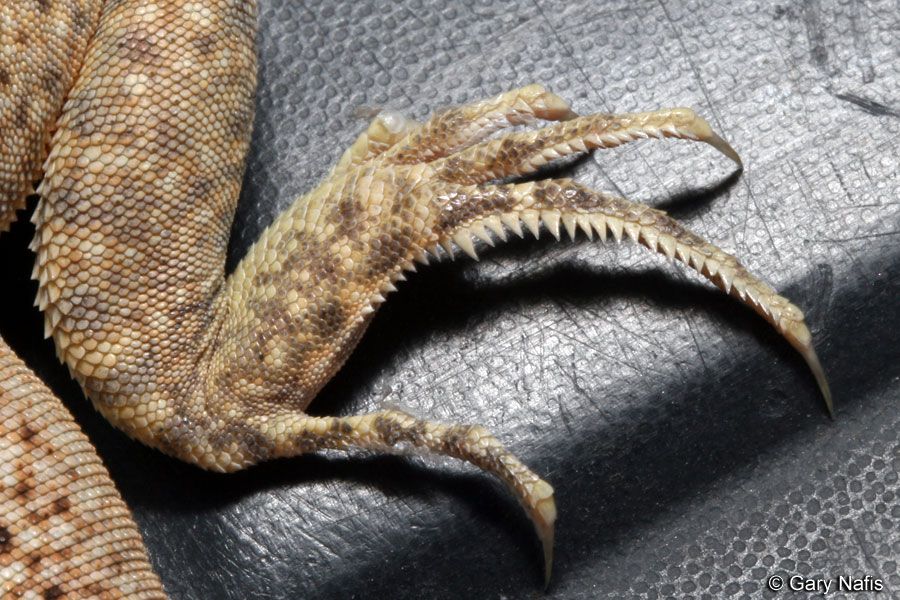Lizards
Description
5-7" (12.7-17.9 cm). Comb like fringe of pointed scales on trailing edge of toes (photo on right). Flattened body covered with velvety granular scales. Dark bands under tail. Gray to white with dark eyelike spots, rough lines over shoulder, diagonal lines on throat. Black blotch on each side of belly. Orange or pink on sides.
Species Desert (U. m. notata) orange patch on side of belly; extreme s. California and adjacent n. Baja. Sonoran (U. n. rufopunctata), no orange belly patch; extreme sw. Arizona and adjacent Mexico
Discussion
Diurnal.
It would be hard to find a worse place for a home than the windswept sand dunes of the
Southwest. The heat, the cold, the sand -- perfect for a certain lizard best known
for its toes.
That would be the Fringe-toed Lizard, which takes its name from
the special scales on its feet that, like snowshoes, increase traction and keep the
lizard from sinking in the porous terrain. And if it can't outrun a predator, the
Fringe-toed Lizard burrows into the sand and disappears. Its shovel-like snout and
muscular neck make such quick maneuvers possible.
Once beneath the surface,
the lizard can relax. Thanks to flaps that cover its ears, eyelids that lock shut,
and valves in its nostrils, there's little chance that the sand will irritate the
lizard or suffocate it. In fact, the Fringe-toed Lizard is so fond of sand that it
sometimes buries itself just to cool off.
This species is well adapted
to living in sand. The toe fringes act like "snowshoes" to stop the
feet from sinking. Fringe-toed Lizards "swim" into the sand to avoid
capture, also to avoid extreme heat or cold. The setback jaw, scaly
flaps over the ear, overlapping eyelids, and valves in the nostrils
all serve to keep out sand while the lizard is
burrowing.




